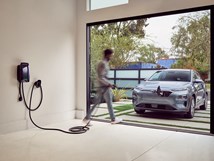GM Cruise Delays Autonomous Taxi Service
GM Cruise LLC says its driverless taxis won’t be ready to deploy for paying customers this year after all.
GM Cruise LLC says its driverless taxis won’t be ready to deploy for paying customers this year after all.
CEO Dan Ammann tells Bloomberg News that verifying the safety of the cars is taking longer than expected. He now says the General Motors Co. affiliate will debut its taxis for paying customers in San Francisco sometime in 2020.
Referring to a familiar adage in Silicon Valley, Ammann cautions that “the mindset of ‘move fast and break things’ certainly doesn’t cut it” for autonomous vehicles.

Cruise’s first robotic taxis will be modified versions of GM’s Bolt electric car. Ammann says GM, Cruise and Honda are working on a taxi-specific vehicle for future self-driving services.
Bloomberg notes that Alphabet Inc.’s Waymo driverless-car affiliate also missed its self-declared goal of introducing a commercial driverless ride-hailing service in 2018. The unit has been testing 500 self-driving Chrysler Pacifica minivans in Phoenix for three years, using volunteer test families.
Waymo did begin accepting paying customers for a few of its robotic shuttles—but with a backup driver on board—at the end of last year.
RELATED CONTENT
-
Multiple Choices for Light, High-Performance Chassis
How carbon fiber is utilized is as different as the vehicles on which it is used. From full carbon tubs to partial panels to welded steel tube sandwich structures, the only limitation is imagination.
-
TRW Multi-Axis Acceleration Sensors Developed
Admittedly, this appears to be nothing more than a plastic molded part with an inserted bolt-shaped metal component.
-
on lots of electric trucks. . .Grand Highlander. . .atomically analyzing additive. . .geometric designs. . .Dodge Hornet. . .
EVs slowdown. . .Ram’s latest in electricity. . .the Grand Highlander is. . .additive at the atomic level. . .advanced—and retro—designs. . .the Dodge Hornet. . .Rimac in reverse. . .








